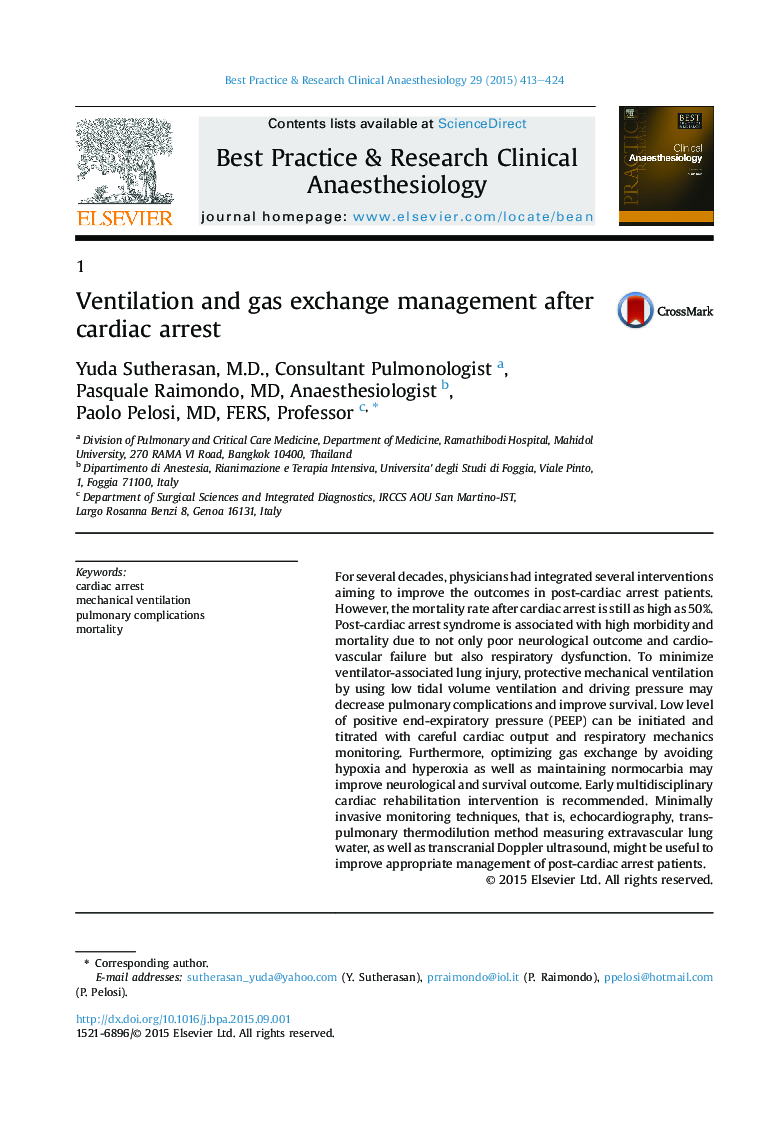| کد مقاله | کد نشریه | سال انتشار | مقاله انگلیسی | نسخه تمام متن |
|---|---|---|---|---|
| 2748340 | 1149183 | 2015 | 12 صفحه PDF | دانلود رایگان |
For several decades, physicians had integrated several interventions aiming to improve the outcomes in post-cardiac arrest patients. However, the mortality rate after cardiac arrest is still as high as 50%. Post-cardiac arrest syndrome is associated with high morbidity and mortality due to not only poor neurological outcome and cardiovascular failure but also respiratory dysfunction. To minimize ventilator-associated lung injury, protective mechanical ventilation by using low tidal volume ventilation and driving pressure may decrease pulmonary complications and improve survival. Low level of positive end-expiratory pressure (PEEP) can be initiated and titrated with careful cardiac output and respiratory mechanics monitoring. Furthermore, optimizing gas exchange by avoiding hypoxia and hyperoxia as well as maintaining normocarbia may improve neurological and survival outcome. Early multidisciplinary cardiac rehabilitation intervention is recommended. Minimally invasive monitoring techniques, that is, echocardiography, transpulmonary thermodilution method measuring extravascular lung water, as well as transcranial Doppler ultrasound, might be useful to improve appropriate management of post-cardiac arrest patients.
Journal: Best Practice & Research Clinical Anaesthesiology - Volume 29, Issue 4, December 2015, Pages 413–424
